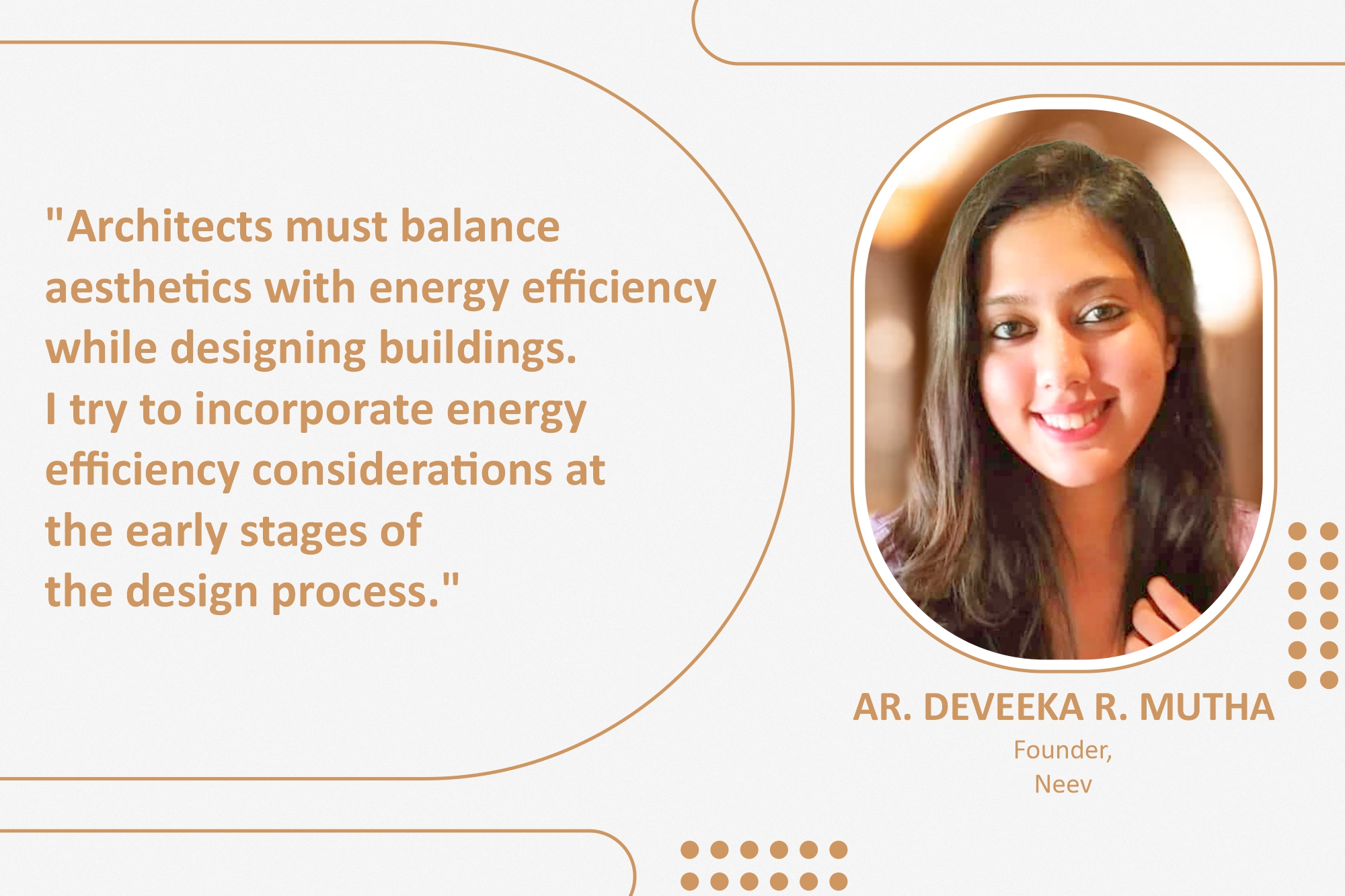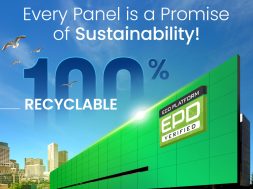Balancing sustainability and aesthetics for energy-efficient design

This interaction explores the sustainable and energy-efficient architectural practices advocated by Ar. Deveeka R. Mutha into her projects.
How do you integrate passive design strategies, such as orientation and shading, to enhance energy efficiency in your building projects?
Passive design techniques are crucial for optimising energy efficiency in construction projects in India, where climate variations can be significant across regions. This can be achieved by implementing strategies like designing buildings to maximise natural light and ventilation, reducing heat gain with shading devices such as overhangs and louvres, incorporating high-performance insulation, controlling temperature with thermal mass, and selecting materials with lower energy consumption. Building energy efficiency can also be enhanced by incorporating elements like solar panels, rainwater harvesting systems, and green roofs.
How do you balance energy efficiency and aesthetic considerations in your architectural designs?Architects must strike a balance between aesthetics and energy efficiency when designing buildings. I strive to include energy efficiency considerations early in the design process. Utilising passive design strategies such as building orientation, natural ventilation, shading devices, and thermal mass enhances energy efficiency without compromising aesthetics. Using high-performance materials and innovative technologies, such as energy-efficient lighting systems, smart controls, and visually appealing renewable energy solutions, helps balance sustainability and aesthetics.

Can you describe your approach to optimising natural lighting in buildings to minimise the need for artificial lighting and enhance energy efficiency?
To maximise natural light, the long facades of the building should face north-south. Incorporating large windows, skylights, and glass doors allows natural light to penetrate deep into interior spaces. Reflective surfaces and light-coloured interior finishes effectively bounce and distribute daylight. Choosing energy-efficient glazing with low-E coatings and appropriate solar heat gain coefficients to control heat gain and glare while maximising daylight penetration is essential.
How do you approach selecting energy-efficient materials and technologies in your projects, considering both environmental impact and long-term energy savings?
When choosing energy-efficient materials and technologies, various factors must be considered. Conducting a life cycle assessment helps determine their environmental impact during each stage—extraction, manufacture, use, and disposal. Materials and technologies with high-energy performance ratings should be chosen, such as glazing with a low U-value, insulation with a high R-value, and energy-efficient HVAC/lighting systems. Additionally, opting for renewable, recycled, and durable materials helps reduce the extraction of virgin materials and their environmental impact.
What design strategies and technologies do you prioritise in net-zero projects to achieve energy neutrality and reduce environmental impact?
In net-zero projects aimed at achieving energy neutrality and reducing environmental impact, prioritising design strategies and technologies like passive design, high-performance building envelope, renewable energy systems, energy-efficient HVAC systems, and smart building controls are crucial. Passive design strategies reduce energy demand and enhance thermal comfort, while a high-performance building envelope minimises heat gain and loss. Integrating renewable energy systems, such as solar panels, wind turbines, or geothermal heat pumps, reduces dependency on conventional energy sources, and energy-efficient HVAC systems optimise energy use. Additionally, leveraging IoT (Internet of Things) and BMS (Building Management System) leads to greater efficiency and smarter energy consumption.
Cookie Consent
We use cookies to personalize your experience. By continuing to visit this website you agree to our Terms & Conditions, Privacy Policy and Cookie Policy.










